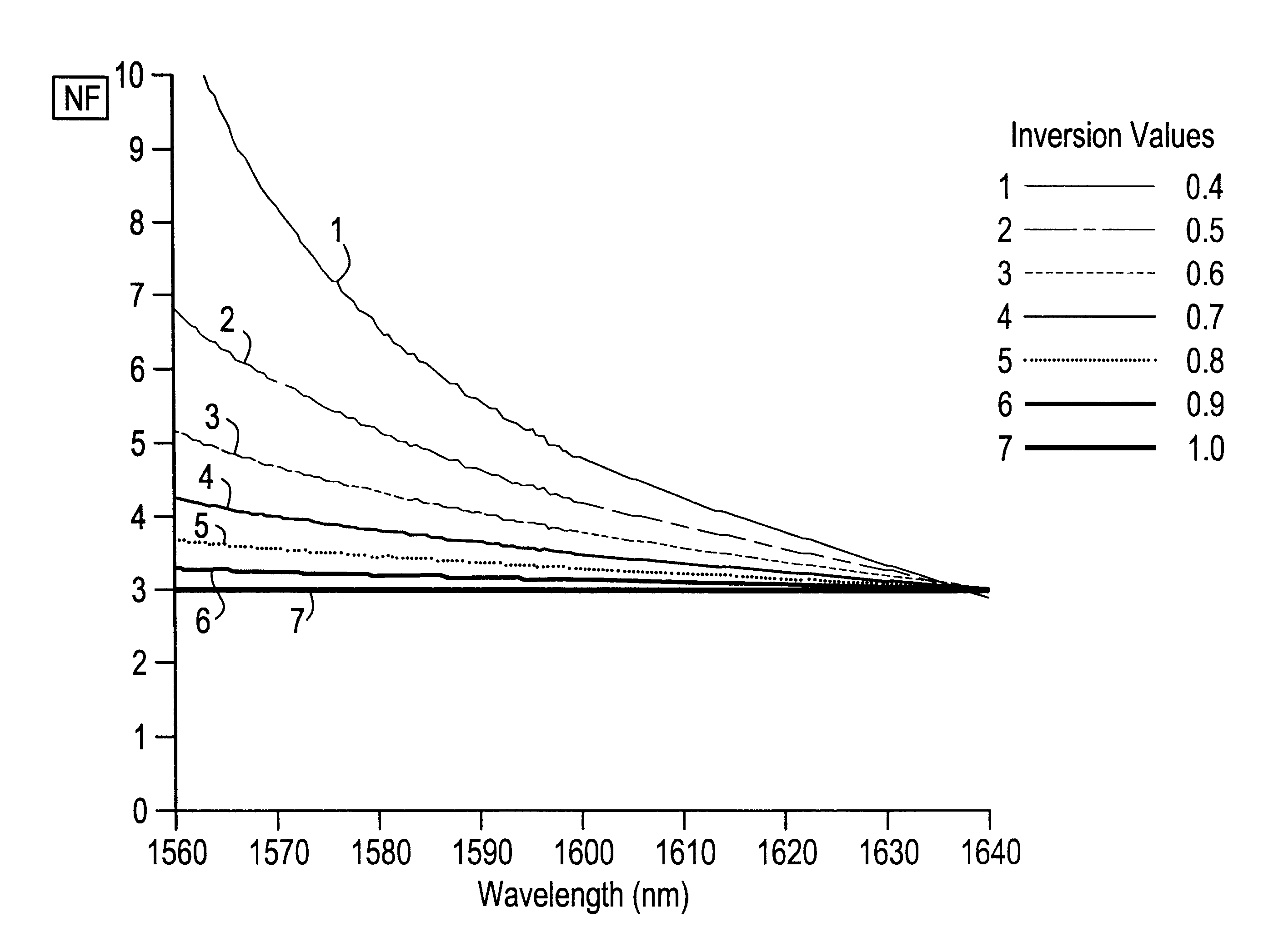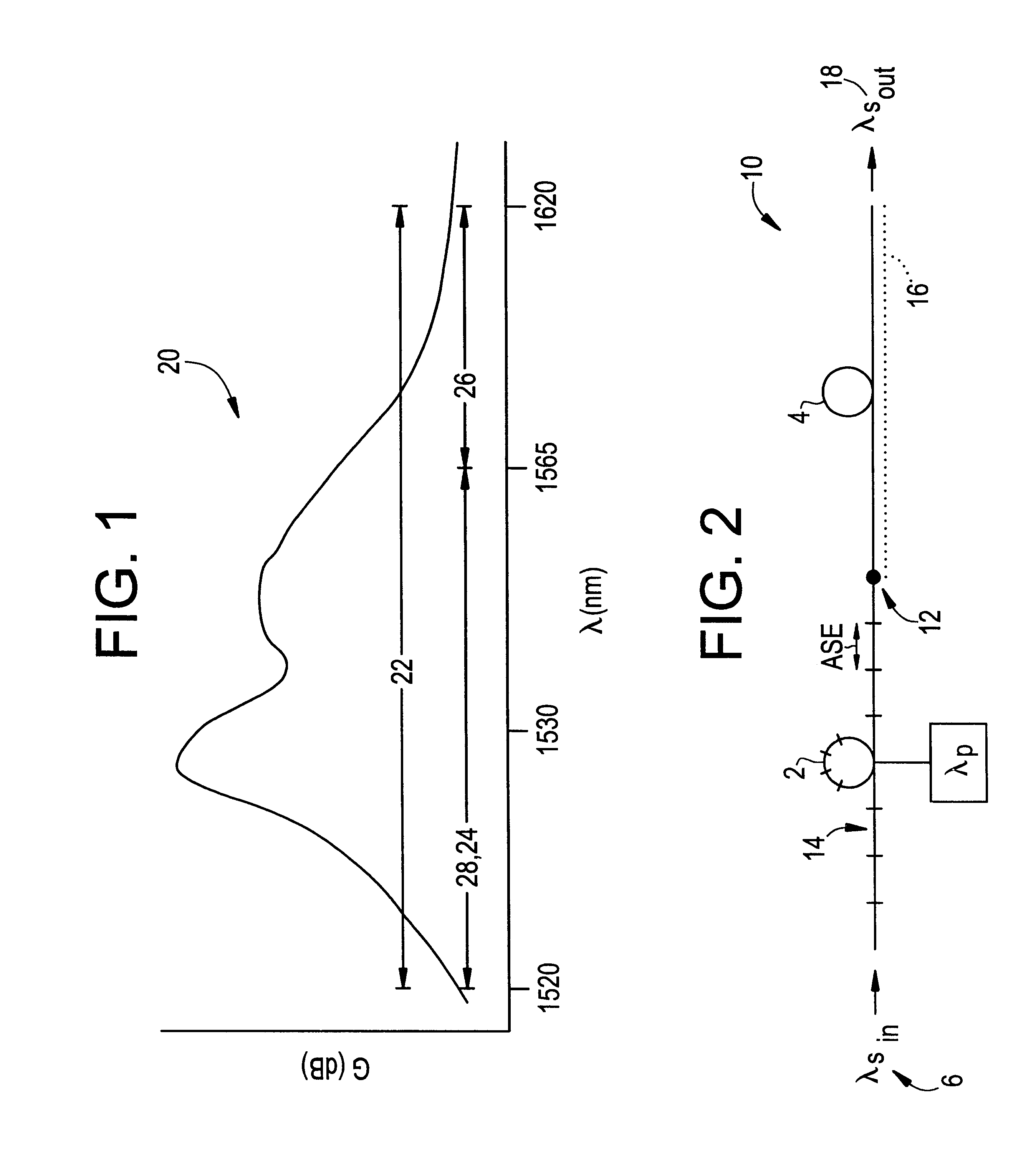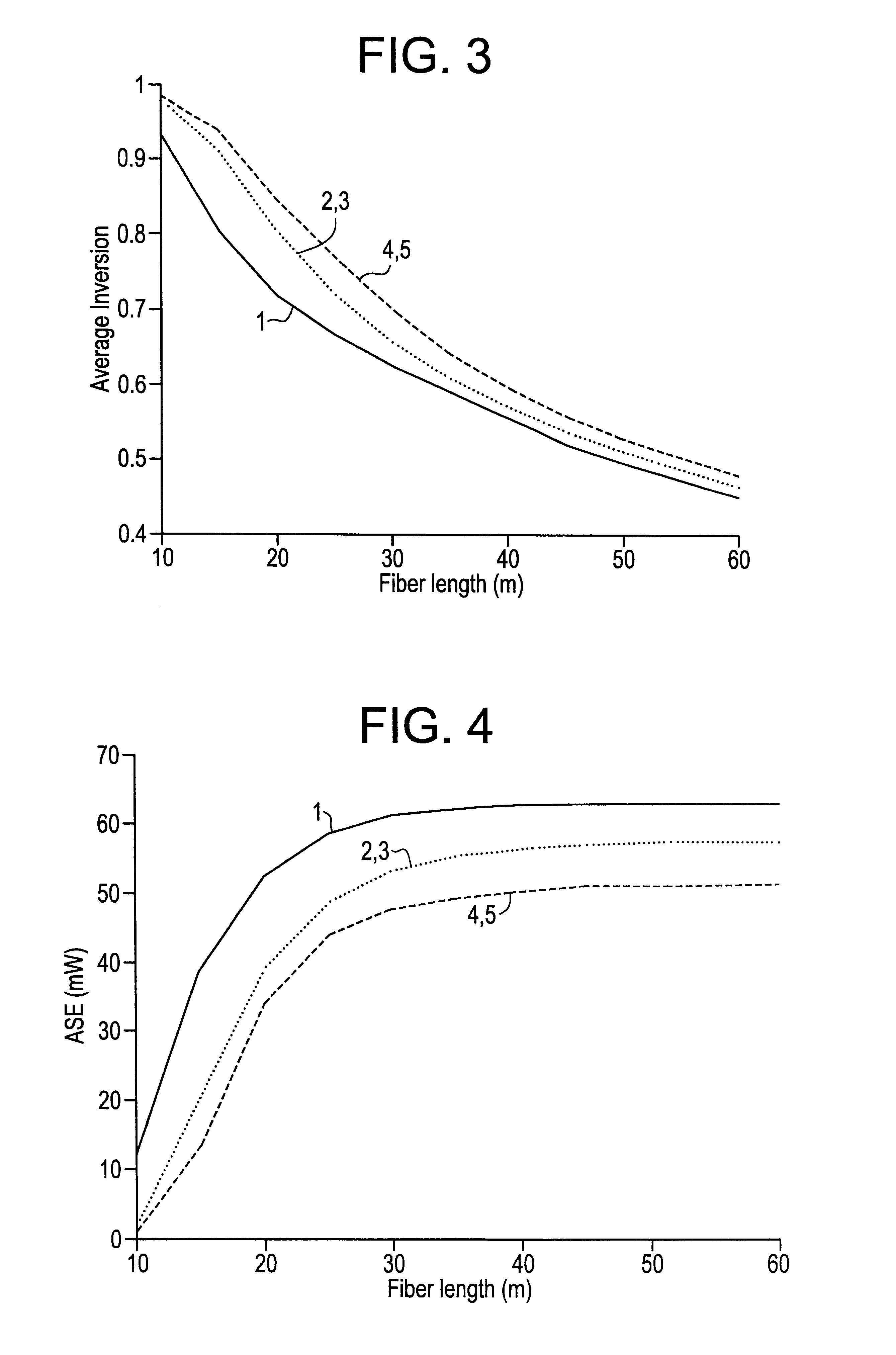L band amplifier with distributed filtering
a filtering and l band technology, applied in electromagnetic transmission, transmission, active medium materials, etc., can solve the problems of reducing power conversion efficiency, reducing the efficiency of more length dependent reductions, and significantly compromising the noise performance of amplifiers
- Summary
- Abstract
- Description
- Claims
- Application Information
AI Technical Summary
Benefits of technology
Problems solved by technology
Method used
Image
Examples
Embodiment Construction
To provide the reader with a clearer understanding of the invention, the term "distributed filter" as used herein refers to filtering that occurs over some finite physical portion of the filtered gain stage (i.e., the active fiber), as opposed to at merely a single or discrete location in the gain stage. Thus the filter may, for example, be distributed over a length of the gain stage practically ranging from about 25% of the fiber to substantially the entire gain stage depending upon how well the distributed filter provides filtering of the ASE produced by the amplifier. This will be described in greater detail below in relation to the amplifier filtering embodiments of the invention; however, it can be said that the distributed filter may include a plurality of discrete filters distributed over the physical portion of the gain medium to provide effective filtering or, alternatively, a physically continuous filter distributed over a portion of the gain medium.
A helpful distinction i...
PUM
 Login to View More
Login to View More Abstract
Description
Claims
Application Information
 Login to View More
Login to View More - R&D
- Intellectual Property
- Life Sciences
- Materials
- Tech Scout
- Unparalleled Data Quality
- Higher Quality Content
- 60% Fewer Hallucinations
Browse by: Latest US Patents, China's latest patents, Technical Efficacy Thesaurus, Application Domain, Technology Topic, Popular Technical Reports.
© 2025 PatSnap. All rights reserved.Legal|Privacy policy|Modern Slavery Act Transparency Statement|Sitemap|About US| Contact US: help@patsnap.com



